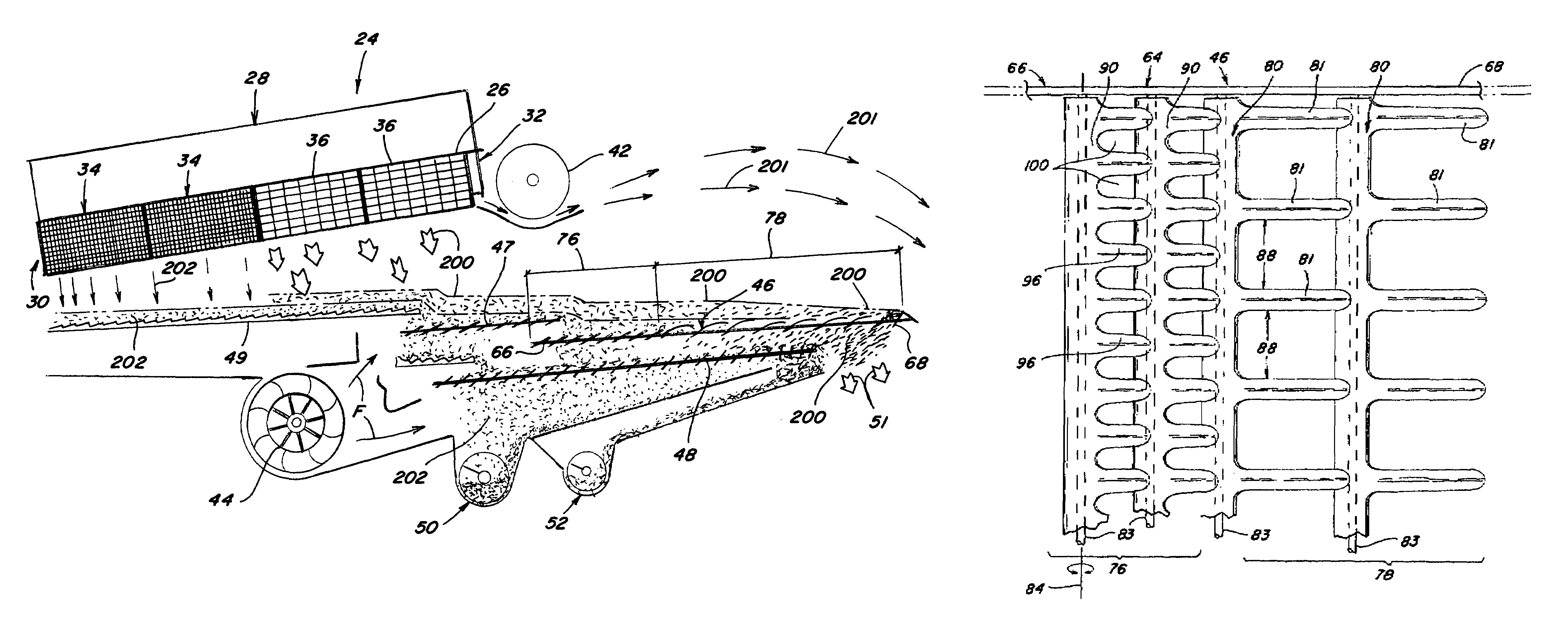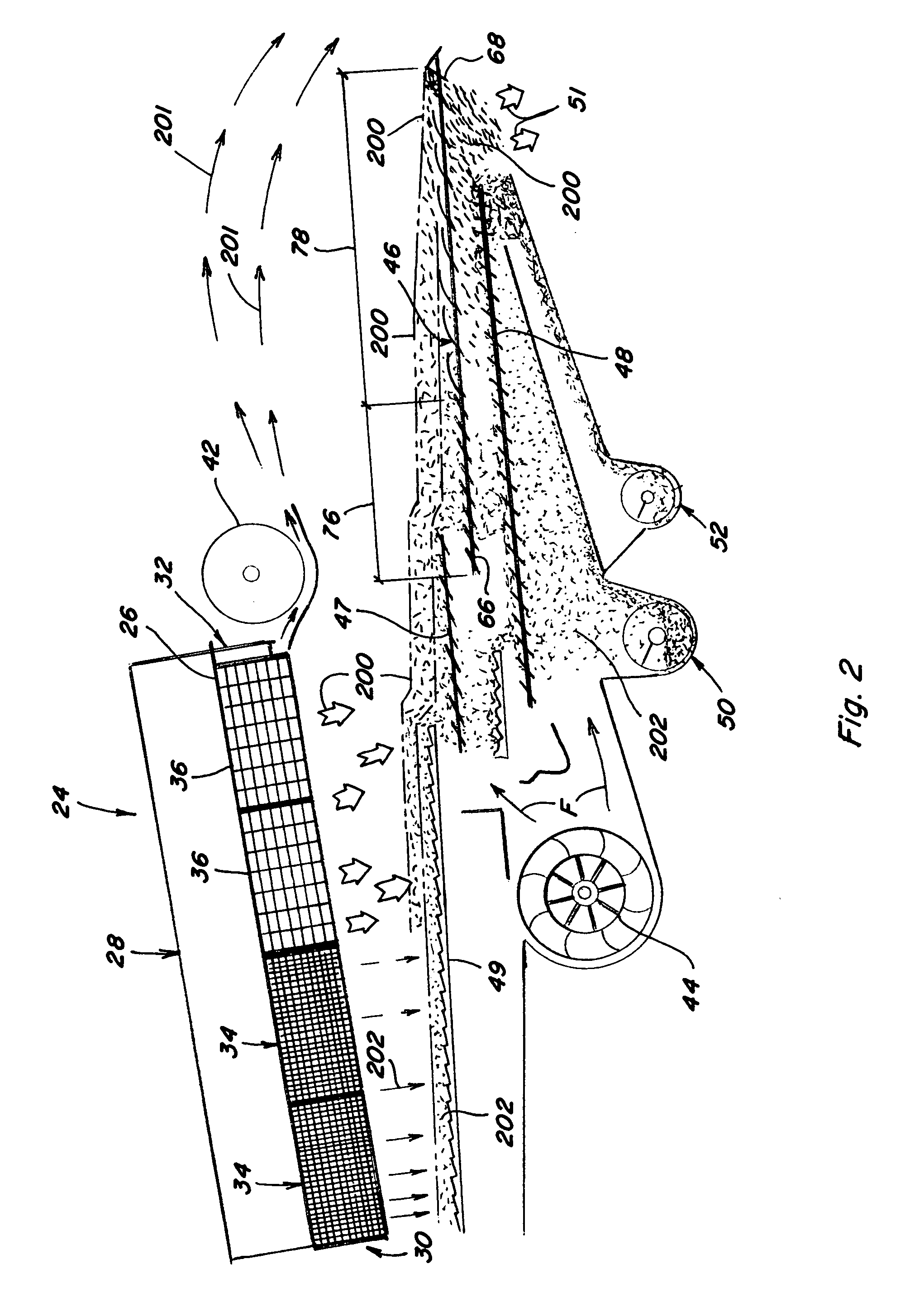Dual action corn cob separation and improved chaffer for whole corn cobs
a corn cob and chaffer technology, applied in solid separation, agriculture tools and machines, agriculture, etc., can solve the problems of reducing the volume of cob residuals, reducing the volume of cobs to be dealt, and affecting the quality so as to prevent contamination, enhance the volume of whole corn cobs passing, and reduce the space
- Summary
- Abstract
- Description
- Claims
- Application Information
AI Technical Summary
Benefits of technology
Problems solved by technology
Method used
Image
Examples
Embodiment Construction
[0026]While the present invention is susceptible of embodiment in various forms, there is shown in the drawings a presently preferred embodiment thereinafter described, with the understanding that the present disclosure is to be considered as an exemplification of the invention and is not intended to limit the invention to the specific embodiment illustrated.
[0027]Referring now to the drawings, wherein like reference numerals refer to like parts throughout the several views, there is shown in FIG. 1 a self-propelled combine 10. The combine 10 includes a body, or housing, 12 supported on front drive wheels 14 and steerable rear wheels 16. The combine is powered by an engine (not shown) and controlled from an operator station 18. A crop harvesting apparatus or header 20 and a feeder mechanism 22 are attached at a forward end of the combine. The feeder mechanism 22 feeds harvested corn crop material to a threshing zone or section 24, of an axial flow rotary type combine which includes ...
PUM
 Login to View More
Login to View More Abstract
Description
Claims
Application Information
 Login to View More
Login to View More - R&D
- Intellectual Property
- Life Sciences
- Materials
- Tech Scout
- Unparalleled Data Quality
- Higher Quality Content
- 60% Fewer Hallucinations
Browse by: Latest US Patents, China's latest patents, Technical Efficacy Thesaurus, Application Domain, Technology Topic, Popular Technical Reports.
© 2025 PatSnap. All rights reserved.Legal|Privacy policy|Modern Slavery Act Transparency Statement|Sitemap|About US| Contact US: help@patsnap.com



